Both amateurs and professionals in horticulture strive hard to keep their plants healthy and robust. Among the techniques embraced is the use of Epsom salt, a naturally occurring mineral with magnesium sulfate as its main component. This article will help you understand how Epsom salt improves your plants’ lives by aiding them in nutrient uptake and photosynthesis, among others. We will discuss the advantages of sulfur and magnesium (elements constituting Epsom salt), practical application forms for gardeners, and any scientific works proving that this soil additive is effective. When this write-up concludes, readers will have complete knowledge of how to apply Epsom salts to gardens, thus improving plant wellness and productivity levels.
Understanding the Role of Magnesium in Plant Health
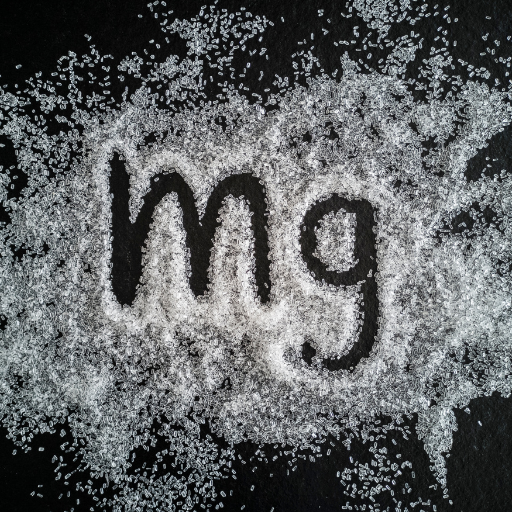
The essential macronutrient magnesium plays a critical role in plant health and is involved in various physiological processes. It is the central atom in chlorophyll molecules through which photosynthesis happens; photosynthesis being a process by which plants convert light energy into chemical energy. In this way, it promotes not only the production of energy but also facilitates the complete growth and development of a plant. Additionally, magnesium aids in activating several carbohydrate synthesis enzymes and nucleic acid metabolites; this affects cell division and protein synthesis. Further, by improving root functioning and overall healthiness of plants with respect to stressors from the environment, its availability makes nutrient uptake more efficient. This is because there are no symptoms for unhealthy plants that include stunted growth, interveinal chlorosis or proneness to diseases.
Signs of Magnesium Deficiency in Your Garden
- Interveinal Chlorosis: This could be one of the indications that your soil may lack magnesium. It means that the older leaves turn yellow between veins while the veins themselves remain green. This visual symptom indicates poor chlorophyll production, which adversely affects photosynthesis.
- Stunted Growth: Reduced overall growth rates result from inadequate cell division and elongation due to magnesium deficiency. Affected plants will have considerably reduced heights and leaf sizes, which will impair their thriving abilities.
- Leaf Curling: As nutrients become scarce within a plant suffering from magnesium deficiency, curling can be seen along the edges of older leaves, especially those near the base. As such, resources are concentrated towards new growth, leaving behind old foliage, hence causing leaves to curl.
- Poor Fruit Development: In some cases, flowering and fruiting plants may suffer from symptoms such as below-par blossoming, leading to reduced fruit formation with small-sized fruits at the maturation stage (Dellinger et al., 2017). For instance, low yields or produce quality may occur because of the unavailability of magnesium.
- Increased Pest and Disease Susceptibility: When a plant lacks magnesium, it becomes vulnerable to pests and diseases because it lacks natural defense mechanisms. This can be attributed to decreased photosensitivity and general metabolism, which are critical in stress response situations.
- Leaf Drop: As the magnesium deficiency gets worse, older leaves may drop off prematurely. This leaf drop makes the plant inefficient in photosynthesis, worsening growth issues.
How Epsom Salt Supplies Essential Magnesium
Magnesium sulfate, commonly referred to as Epsom salt serves as an effective source of this mineral for plants. Whenever Epsom salt is mixed with water, its constituent ions disintegrate into the solution, resulting in readily available magnesium and sulphate, respectively. For example, these ions are easily absorbed by root hairs hence being rapidly incorporated into fundamental biochemical processes like photosynthesis and nutrient movement. Research shows that chlorophyll production, which is indispensable for light energy conversion into chemical energy, depends on Mg2+ (magnesium) concentration (Machado et al., 2015). In addition, sulfur from sulfate aids in amino acids and protein synthesis, thereby enhancing growth, among other aspects of resilience. For this reason, the use of Epsom salt could reduce signs associated with lack of enough Magnesium or prevent them altogether so that the overall wellbeing of plants is safeguarded.
Enhancing Nutrient Absorption with Epsom Salt
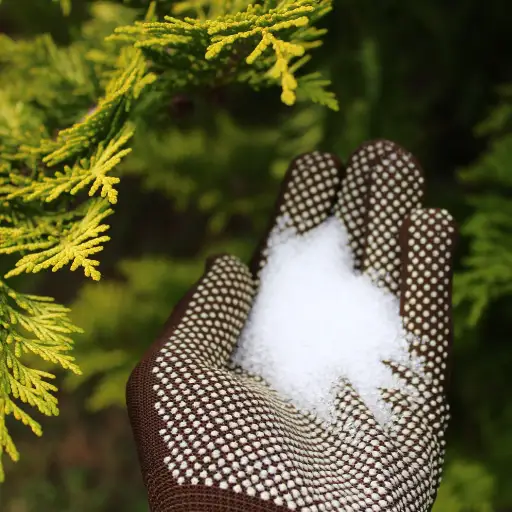
Epsom salt increases nutrient absorption in plants by improving soil structure and facilitating the incorporation of other vital elements. The presence of magnesium in Epsom salts renders plant cell walls’ pores wider, thus enabling better passage of nutrition particles. All the same, it acts with nitrogen and phosphorus or potassium alongside others to ensure more nutrients are available on an overall scale. Also, research findings indicate that magnesium is a major activator for many enzymes participating in various metabolic pathways during plant life hence better nutrient uptake results. Further, sulfate helps make nutrients available for assimilation while preventing their deficiency from happening at all costs. Therefore, one should not think that Epsom salt only contains Mg, but it has substances that help deliver magnesium into a plant.
How Epsom Salt Increases Soil Nutrient Availability
Epsom salt enhances soil nutrient availability through various pathways involving release and incorporation within the soil matrix. The presence of Magnesium Sulphate in Epsom salts is helpful to loosen compacted soils therefore allowing easy penetration of air and water through them. In this way, microbial activities also lead to improved structure and humus formation as a result. By doing so, for example, when there is some amount of magnesium in soils, it improves the interaction between particles making up part of soil, such as clay minerals or organic matter (humus) with cations like K+ and NH4+ ion exchange capacity (CEC). This means that such soils can retain higher amounts of ions released from solution by forming ionic bond patterns connecting them with these ions whereupon they remain sufficiently available during root area’s reloading all year round following its actual requirements. It should also be added here that sulphate content serves as pH buffer because several other elements become soluble under slightly acidic values especially those relating alkaline media via which plants get their nutrition. Accordingly, magnesium becomes important for providing essential plant nutrients in this manner.
The Science Behind Epsom Salt and Root Health
Epsom salt contains magnesium and sulfate that promote healthy roots. Magnesium is necessary for making chlorophyll, which is responsible for photosynthesis. Adequate levels of magnesium activate enzymes to create energy for growth processes so as to develop a strong root system. Sulphate ions also participate in the formation of amino acids and proteins majorly used in building up roots. It is noticeable from experimental works that it enhances water-holding capacity in the roots as well as endorses increased soil-beneficial microorganisms, leading to better-developed roots with more distinct structures. Moreover, nutrient availability increases by this way thus enhancing resistance of the root system against environmental factors like water scarcity especially if there has been any other such event occurring earlier in this region.Consequently, Epsom salt application can help improve root health especially its vitality over time
Essential Role of Epsom Salt in Nutrient Movement in Plants
Epsom salt is mainly made up of magnesium sulfate, an element that is essential in maintaining the movement of nutrients within the plants because it has a direct influence on enzymes and chlorophyll formation areas. The synthesis of chlorophyll requires the central atom magnesium, which enables the further synthesis of carbohydrates for transport through plant tissues by carbohydrates as “fuel,” moving mineral compounds inside a plant body. Magnesium also helps to activate several enzymes involved in photosynthesis and metabolic processes, thus increasing nutrient absorption and uptake into cells, making them useful substances for supporting life functions. Another important factor is that sulfate ion enhances mobility quantity leading nitrogen , phosphorus etc across solution while roots are taking these elements according their requirements just releasing them from their affinity only when they travel nearer toward growing tips along xylem sap flows once more each season. Taken together, they show how indispensable Epsom salt becomes in facilitating nutrient transport within plant organs hence leading to positive growth and productivity consequences.
Using Epsom Salt to Improve Photosynthesis
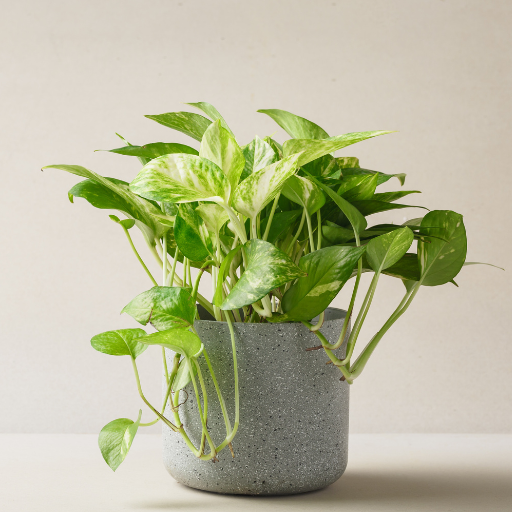
Chlorophyll needs magnesium to make energy. This pigment is responsible for capturing light. Sufficient chlorophyll synthesis produces optimal levels of this nutrient and thereby increases the plant’s capacity to convert sunlight into usable energy. Additionally, it has a role in stabilizing the structure of the chlorophyll molecule necessary for photosynthesis. There is sulfate present in Epsom salt as well, which also helps plants to produce proteins and amino acids that they require for growth and development during photosynthesis. Another reason why Epsom salt can be used is because it helps improve water retention in soil by acting as a stress reliever and allowing roots to become healthier, thus leading to plants better coping with environmental barriers.
The Relationship between Magnesium and Chlorophyll Formation
Magnesium is crucial at the center of the chlorophyll molecule, where it acts as the central atom involved in the absorption of light during the photosynthesis process. In some cases, reduced chlorophyll production could arise from insufficient magnesium levels, causing a condition known as chlorosis, in which leaves turn yellowish in coloration. Plant tissue usually contains 0.2-0.5% Mg on a dry weight basis depending on species such that maintenance of magnesium within this range will optimize chlorophyll synthesis, hence increasing plants’ capacity towards absorbing sunlight.
The main difference lies in technical parameters such as wavelengths of maximum absorption, which are 430-450 nm (blue) and 640-680 nm (red) for chlorophylls a and b, respectively. Chloroplasts energized by enough magnesium lead to more efficient electron transfer during light reactions of photosynthesis thus greatly influencing overall photo-synthetic efficiency and energy conversion process. Magnesium also plays an important part in activating key enzymes included in carbon fixation through Calvin cycle, supporting further significance of magnesium ions for robust plant growth and productivity.Complementation with correct amounts of magnesium, such as when one applies Epsom salts, therefore, directly corresponds to an increase in chlorophyll levels, hence better performance of photosynthesis.
How Epsom Salt Increases Energy Conversion in Plants
Magnesium and sulfur are crucial to the physiology of plants, where they support various energy conversion processes. Magnesium helps in the forming of chlorophyll molecules, which is needed for efficient photosynthesis. Thus, plants can absorb light energy more effectively with an increase in chlorophyll synthesis. Therefore, sulfur helps produce amino acids and proteins that are involved in metabolic processes. Availability of these nutrients is higher when Epsom salts are applied thereby increasing enzymatic activity as well as energy conversion during photosynthesis. As such, growth rates become higher, leading to increased resistance against environmental conditions through magnesium’s function in light capture and sulfur’s role in overall plant metabolism.
Can Epsom Salt Be Used to Help Plants Cope with Stress?
It is important to note that Epsom salt can come in handy when it comes to plant stress management. According to studies, magnesium sulfate enhances carbon assimilation in plants aiding them in adaptation to harsh conditions. It has the capacity of making water utilization effective and improving nutrient absorption especially under water stress and high salinity environment. Moreover, it also stimulates the synthesis of glutathione which is a very essential antioxidant for reducing the toxic effects of oxidative stress brought by environmental factors. By promoting strong root growth and enhancing cellular functions, Epsom salt plays an essential role in raising plant tolerance levels towards different types of stresses thereby leading to improved survival rates during adverse periods.
Promoting Vigorous Plant Growth with Epsom Salt
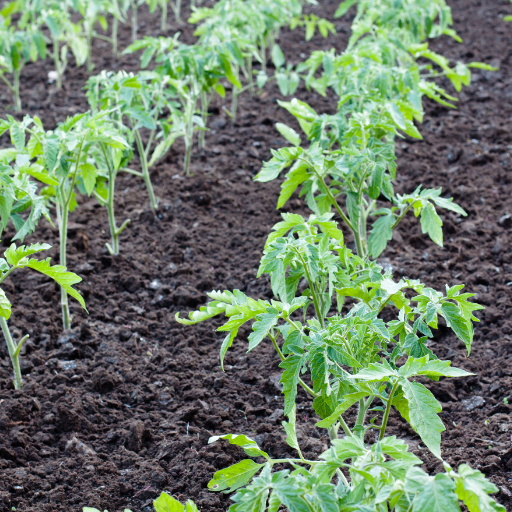
Epsom salt, which is mainly made of magnesium sulfate, has essential nutrients that enhance plant growth. This supports the production of chlorophyll by promoting photosynthesis and energy conversion in plants. The nutrient uptake and bioavailability are improved through the presence of magnesium within the plants’ body system promoting metabolic processes for healthy growth. Furthermore, Epsom salt helps to develop plant cells and structures leading to strong stems and leaves. What is more, research shows that sulfur stimulates enzyme activity for protein synthesis and general well-being of the plant. Thus, a healthy garden or agricultural system is marked by these combined effects that not only foster growth but also build resistance against pathogens as well as abiotic stresses. In this regard, regularly adding Epsom salt to soil treatments could make a big difference in terms of plant vitality and productivity.
How to Apply Epsom Salt for Optimal Growth
To apply Epsom salt effectively for optimal plant development, dissolve 1-2 tbsp full in one gallon filled with water to result in a nutrient-rich solution. This mixture can be sprayed on the leaves as foliar spray during early morning or late afternoon when there are no chances for evaporation hence improving absorption rate among the plants. For soil application, sprinkle dry granules directly into the soil at planting season’s start; add about a tablespoon per foot height (or depth). Once established, monthly feedings of Epsom salts solution will renew vigor, especially during blooming fruiting stages. As much as possible look out for any signs observed on plants due to response after applying nutrients too increase or decrease depending on those responses.
The Best Time to Use Epsom Salt in Your Garden
When it comes to your garden, timing is everything if you want maximize how useful Epsom salt can be. In general, Epsom salts would best utilize at two times – while preparing the seed bed before planting season starts and as needed when plants are growing. Applying Epsom salts helps in root growth and prepares the plant for successful development at the start of the planting season. To use Epsom salt on leafy greens, it is advisable to apply them a little before or during periods of rapid growth especially if magnesium and sulfur levels are low but required for optimal photosynthesis. During flowering and fruiting seasons, applying Epsom salt regularly increases yields, leading to an adequate supply of nutrients required by plants to support reproductive growth. Regular application will be guided by the trend in plant growth with most recommendations requesting that it should happen after every 4-6 weeks within the growing season so that there is continuous benefit.
Common Growth Issues Solved by Epsom Salt
- Chlorosis: A condition where there’s not enough chlorophyll causing leaves to become yellowish green. This condition can be helped by magnesium-rich Epsom salts, which help synthesize chlorophyll, thus enhancing the overall greening of the plant.
- Poor fruiting or flowering: The problem occurs because there’s not enough magnesium in soil. For the blooming or bearing period, its additional source is an essential element for the reproduction process well increasing yields as well as robustness in development.
- Weak root development: Magnesium deficiency results in bad root development, making them weak and stunted growth. When mixed with soil during planting, Epsom salts promote better root systems, raising nutrient uptake capability and withstanding stress-related problems.
- Leaf curling or mottling: This may indicate nutrient deficiencies, particularly sulfur and magnesium. These symptoms can be treated through constant applications of Epsom salts, thus improving foliage healthiness (vitality) and the general welfare of the plant system.
- Sluggish growth: If the plants seem to be growing slowly, it is likely that there is a lack of nutrients. Epsom salt can enhance plant growth rates and general health through providing necessary minerals that strengthen metabolic activities.
Boosting Flower and Fruit Production Naturally
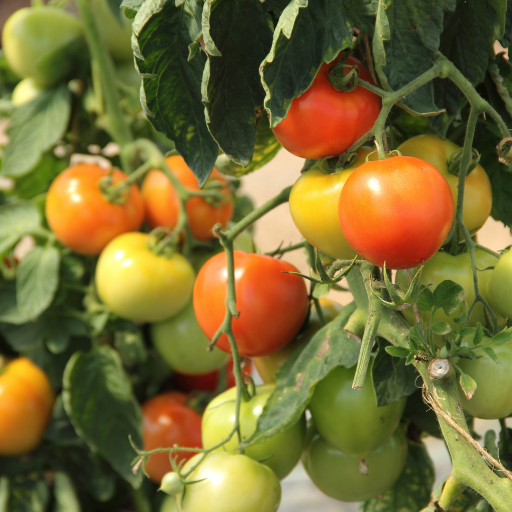
Consider using various effective ways of boosting flower and fruit production naturally. First, it is important to ensure that the soil pH is optimal for flower growth; a slightly acidic to neutral pH (around 6.0-7.0) fosters nutrient availability in plants, thereby enhancing blooming and fruit development. Fertility of the root zone can also be improved by incorporating organic matter such as compost into the soil, which increases its aggregation, leading to a better root environment.
Also, regular mulching has been found to be beneficial because it helps maintain soil moisture, temperature moderation, and weed suppression, hence promoting plant health. It is essential for plants to have balanced watering by giving them enough water without flooding them with too much water so as to prevent stress factors that can stop flowering and fruiting from occurring. Besides this, companion planting influences pollination while at the same time discouraging pests that could lead to an increased yield. Lastly, applying organic fertilizers, especially those containing high levels of phosphorus, will help induce more flowering, thus making your harvest more bountiful.
How Epsom Salt Increases Bloom Size and Color
Magnesium sulphate or Epsom salts remarkably improve the size and color aspects of blooms found in several flowers . The importance of magnesium as an element lies mainly in its role in chlorophyll formation necessary for photosynthesis.It results in stronger plants with solid bright colored blossoms.Plus, magnesium facilitates the absorption of phosphorous involved in flower formation and general plant vigor. Sulfur presence equally enables amino acid development necessary for protein synthesis, thus promoting growth as well as color development. Applying Epsom salts on a regular basis rectifies any deficiencies ensuring bigger flowers with more saturated shades than they would otherwise have had.To obtain good results, dissolve Epsom salt in water, then apply directly onto the soil or use it as a foliar spray when crops are still budding.
Improving Fruit Set and Quality with Epsom Salt
Epsom salt increases fruit set and quality by providing magnesium and sulfur. Magnesium is essential for photosynthesis and energy transfer in plants, which supports flowering, leading to fruit set. Better availability of magnesium leads to improved flower production, which directly affects the amount of fruits harvested. Additionally, this element helps unlock nitrogen and phosphorous—two vital nutrients for proper growth of fruits.
On the other hand, sulfur plays a crucial role in making some amino acids used for protein synthesis as well as enzyme activities necessary for overall plant health while enhancing resistance against stress factors that limit survival chances. Therefore, if Epsom salts are applied regularly, it can lead to healthier plants with more vigorous growth, hence influencing both the quantity and quality of yield produced. By using this method, at major stages of fertilization including blooming, during early initiation of fruiting, one can maximize its effectiveness on the blossoms.This product will be utilized most effectively when diluted in water and then let drenched into the soil or simply sprayed over leaves to enhance nutrient uptake capacity.
Does Epsom Salt Actually Benefit All Flowering Plants?
Epsom salt is generally safe for use in most flowering plants, but it should be applied according to the needs of each species. Many flowering plants can get magnesium and sulfur from Epsom salts which may promote growth and increase bloom quality. However, some plants, especially those that thrive in rich soils or are sensitive to high levels of magnesium, don’t need more Epsom salt; moreover, too much of these nutrients could lead to imbalances. Henceforth, before using this product for any plant purpose, it is vital to perform a soil test for nutrient levels as well as monitor plant responses after applying it so that right quantities can be determined. Consequently, at key growth stages application of Epsom salt can bring about substantial benefits with minimal risks possible.
Tailoring Epsom Salt Applications for Different Plants
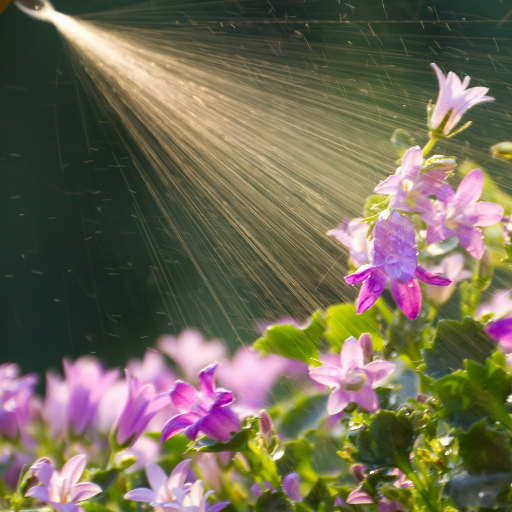
It is, therefore, important to consider the particular nutrient needs and growth conditions of every species when developing Epsom salt treatments. For roses, for instance, the demand for magnesium is high, and thus they can benefit from Epsom salts more than any other flowers that help in increasing flowering and enhancing overall health. However, tomatoes could use some Epsom salt if magnesium deficiency is identified as it helps in fruit development and may prevent blossom end rot.
On the flip side, there are plants such as begonias that do not require Epsom Salt due to their sensitivity to excess magnesium which may cause toxicity or nutrient imbalances. On the other hand, moderate application of Epsom salts improves petunia bloom production without affecting the plants adversely. Begin with smaller amounts applied to your garden area then increase typically based on observation of plant response. By using regular soil tests one can understand what nutrients are available in different types of plants which trees, shrubs and lawns use to grow optimally; this ensures that you avoid too much application at once thereby minimizing risks associated with overapplying.
Vegetables and Epsom Salt: What You Should Understand
Epsom salt plays a vital role in providing magnesium and sulfate to vegetables which are essential nutrients required by plants. Consequently, most vegetables such as peppers, cucumber, and spinach, among others, largely benefit from magnesium since it supports chlorophyll production, hence leading to enhanced uptake of nutrients by roots and improved photosynthesis. Applications must be done during the growing season, usually through foliar sprays or soil amendments, so as to achieve instant results.
A soil test should be conducted before applying any amendment, including Epsom salt; this will enable you to know whether there is enough magnesium or not because too much of it causes imbalances in terms of nutrition while sometimes leading to poisoning. It’s often recommended that about one tablespoonful per foot of height (either mixed into planting soil during transplanting or dissolved in water and sprayed over plants) be used. Epsom salt applications during critical growth phases can increase crop yield and improve the overall quality of vegetables, thus making it a valuable supplement to any garden.
Advantages of Epsom Salt on Flowering Plants
Epsom salts are helpful to flowering plants because they have high levels of magnesium, which is important for flower development and plant vigor. Magnesium assists in the production of chlorophyll, which eventually boosts photosynthesis and energy conversion within the plant. Moreover, sulfate aids in nutrient uptake, particularly potassium, needed for fruiting and flowering processes.
Regular use of Epsom salts has been found to enhance blooming especially in plants such as roses and tomatoes. The best way to apply them is by dissolving them in water or spraying them after being mixed with water. This method helps the flowers grow robustly while preventing blossoms from falling off; ultimately causing brighter shows during peak times throughout springtime when most people want their gardens looking stunning again! It is worth taking time to go through this piece as it explains how field management techniques, including soil testing, should be embraced so that there can always be an optimal balance between magnesium levels within soils, thereby maximizing benefits gained from using Epsom Salts for healthy blooms.
How to Use Epsom Salt for Succulents and Indoor Plants
Epsom salt is an effective treatment to stimulate the growth of succulent and indoor plants. Epsom salts should be applied by dissolving a tablespoon in every gallon of water, which should be used to water your indoor plants every 4-6 weeks. Succulents, on the other hand, only require occasional applications (around 6-8 weeks apart) in order not to overfertilize them leading to root rot.
Furthermore, a foliar spray will come in handy; dissolve one tablespoon of Epsom salt into two gallons of water and spray it directly onto the leaves during the plant’s growing season. This approach ensures that magnesium and sulfur are easily absorbed through the foliage. It’s crucial that you observe how your plants react to Epsom salt by modifying its application according to their growth and health needs, including adapting the concentration or frequency accordingly.
Reference sources
- HGTV
- Source: hgtv.com
- Summary: HGTV explains that Epsom salts can help plants grow bushier, produce more flowers, and have better color. The article notes that the magnesium sulfate in Epsom salts can enhance nutrient uptake and improve overall plant health.
- Extension.umn.edu
- Source: extension.umn.edu
- Summary: This resource from the University of Minnesota Extension highlights that Epsom salts can be a beneficial source of magnesium for plants, especially in cases of magnesium deficiency. It advises using Epsom salts cautiously and only based on soil test results.
- Gardening Know How
- Source: gardeningknowhow.com
- Summary: Gardening Know How discusses the benefits of Epsom salts, focusing on its role in providing magnesium and sulfur to plants. These nutrients are essential for healthy plant growth, although they are secondary nutrients compared to nitrogen, phosphorus, and potassium.
Frequently Asked Questions (FAQs)
Q: Can Epsom salt be used for all types of plants?
A: Yes, Epsom salt can be beneficial for a wide range of plants, including vegetables, flowers, and even indoor plants. However, it’s important to apply it correctly based on each plant’s specific needs.
Q: How often should I apply Epsom salt to my plants?
A: The frequency of application depends on the plant type and soil condition. Generally, once a month is effective for most plants, but you should adjust based on your garden’s specific requirements.
Q: Can I mix Epsom salt with other fertilizers?
A: Yes, Epsom salt can be used alongside other fertilizers to enhance nutrient uptake, particularly magnesium and sulfur, without interfering with the efficacy of other nutrients.
Q: Will Epsom salt help my plants if they are wilting?
A: Epsom salt may help if the wilting is due to a magnesium deficiency. However, wilting can be caused by various factors, so it’s important to diagnose the issue before applying Epsom salt.
Q: Is it possible to overuse Epsom salt on plants?
A: Yes, excessive use of Epsom salt can lead to an imbalance in soil nutrients and potentially harm plants. Always follow recommended guidelines for application to avoid overuse.
Q: How do I know if my plants need Epsom salt?
A: Signs of magnesium deficiency, such as yellowing leaves with green veins or poor fruit production, may indicate that your plants could benefit from Epsom salt.
Q: Can I use Epsom salt as a foliar spray?
A: Yes, Epsom salt can be diluted in water and applied as a foliar spray. This method allows plants to absorb magnesium directly through their leaves, providing a quick nutrient boost.
Q: Is Epsom salt safe for organic gardening?
A: Epsom salt is a natural mineral compound and is considered safe for use in organic gardening. It doesn’t contain any synthetic chemicals and can improve soil health naturally.
Q: Will Epsom salt help with pest control in my garden?
A: While Epsom salt is not a pesticide, some gardeners use it to deter certain pests, such as slugs, when applied around the base of plants. However, its primary benefit is as a soil amendment.
Q: Can I use Epsom salt to revive a dying plant?
A: If the plant is suffering from a magnesium deficiency, Epsom salt may help revive it. However, if the plant’s decline is due to other issues, additional interventions may be needed.






